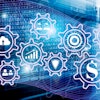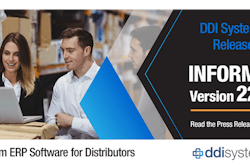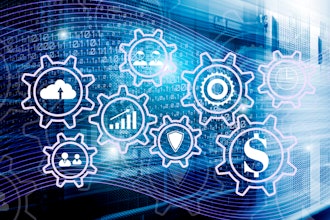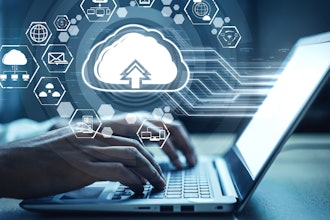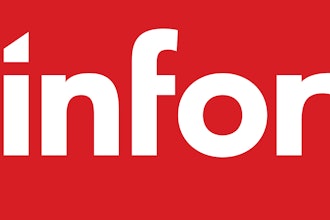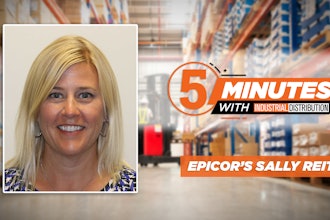
Enterprise resource planning (ERP) has been utilized in the wholesale distribution industry for a very long time, but as the market and business aspirations evolve, a distributor's ability to manage their business effectively also needs to be reexamined. Having an ERP system that provides the industry-specific capabilities and agility required for distributors to expand their market footprint and reach business goals is vital to survival.
Market Dynamics Shift Priorities for Distributors
Competition from nontraditional sources such as suppliers, adjacent industry players, and marketplaces have been establishing strong beachheads in the B2B market for years, with recent acceleration driven by the COVID-19 pandemic. Meanwhile, global supply chain disruptions have accelerated business dynamics to the point where status quo thinking accompanied by older, less capable business systems and processes will no longer provide distributors with the agility required to build resilient business models.
Moving to new wholesale distribution software can be a daunting undertaking without the proper knowledge or support. Despite this, there are still many reasons that distributors should examine their business ambitions to effectively determine if their current ERP system can accommodate the future growth desired. Based upon my role as a solution manager for the wholesale distribution industry, here are some of the most compelling strategic considerations that distributors should use to decide whether to add or upgrade an ERP system.
Support High Growth
As companies react to new market conditions, disruptions, new nontraditional competitors, or simply ambitions to grow the company, the shortcomings of legacy systems become painfully evident. Too often, distributors find that future business objectives cannot be met with the systems that are currently in place.
Most wholesalers have grown organically and, during that growth or acquisition activity, enterprise systems are purchased or built, adapted, and then added to over time to keep up with complex requirements, eventually resulting in a hodgepodge of connected disparate systems. Over time, these systems outstay their welcome through stale functionality and increased risk of failure that inhibit the company’s growth strategy.
Distributors will also move to a new ERP when they need to reduce risk and establish new governance to ensure dispersed teams operate and function the same way across the organization. For example, a standardized ERP system is a good way to facilitate cultural change within an organization when looking at changing a product line, a service line, or looking to change the branding of the organization.
Improve the Customer Experience
Distributors have always focused on customer service, but today’s customers are putting even more demands on distributors to provide consumer-grade experiences. Customers are relying on distributors for a wider range of products that should be readily available through a variety of channels.
To meet these increased demands, distributors are focused on improving the customer experience without adding additional costs associated with higher headcounts. Using advanced systems allows team members to prioritize focus to high-value tasks like fostering customer relationships, building add-on sales, focused marketing activities, and providing accurate sale forecasts, instead of spending time consolidating data from different systems.
Executives recognize that integrated, data-driven systems can help wholesalers extend the business model by leveraging smart tools for automated handling of material-related data, inventory optimization, and logistics capacity management. This increases responsiveness in end-to-end processes and enables planners and salespeople with the right data required to gain a better understanding of customer's wants and needs.
Increase Visibility
Lack of visibility is one of the biggest blockers to supply chain performance and is a strong driver for executives to examine ways to improve existing software systems.
For example, planning, procurement, sales, and operations functions generally work from different systems or spreadsheets, thereby causing stakeholders from each silo to inevitably make decisions that adversely affect other points in the operation.
Distributors that successfully unify fragmented systems can streamline processes and provide optimal business outcomes across multiple departments. They count on the ability to allow stakeholders to make decisions based upon a single source of truth which will save time and reduce waste. Increasing collaboration within a single system will also eliminate latency in communications, allowing for optimal decision-making.
Distributors also find compelling business value when connecting with upstream and downstream business partners. With business disruptions that have exposed weaknesses in the supply chain, more accurate forecasting and predictable operations have been achieved by bringing a distributor's business network and respective trading partners into their purview digitally.
This supply chain nirvana is nearly impossible to obtain without having interconnected software systems. The promise of predictive analytics, machine learning, scenario building, and data federation often holds a strong incentive for executives to get the proper intelligence into the right hands to enable better decisions in real-time.
Increase Profitability
Although ERP software and implementation services can be a big investment, adding to the top and bottom line is a compelling reason to invest in a powerful and unifying ERP system as it can be quite easy to find an excellent return on investment (ROI).
Inventory optimization is a constant challenge and one of the biggest sources of tied-up capital for distributors. Addressing this major challenge for tracking and monitoring expanding inventory levels is a very compelling way for executives to increase margin and free up capital. Without sophisticated planning and monitoring capabilities, planners and procurement personnel will often simply increase inventory levels because it is an easy way to maintain service levels.
High IT costs are also a large consideration for distributors. Consolidating IT costs into one single cost by cutting spending on incompatible systems and eliminating the costs of supporting, maintaining, and testing integrations with multiple systems is a compelling driver for most distributors. This investment allows IT staff to focus on business growth, limiting the need for a high number of software licenses and reducing the infrastructural support required to maintain operational systems. This trend in particular has fueled a great increase of distributors to invest in cloud ERP systems.
Increased Resiliency
Disruption is not new to the supply chain, but the recent global supply chain disruptions have been a wake-up call for distributors to look at strategies to improve their ability to adapt to the ever-changing climate. This has driven many distributors to change their culture and improve the tools utilized to manage the complex supply and demand dynamics.
Supplier management has become much more complex and requires not only supplier diversification but also tighter integration with business partners. Creating and participating in business networks and connecting systems is quickly becoming a goal of many distributors and their upstream and downstream partners.
Inventory strategies and capabilities such as demand-driven material requirements planning, optimizing inventory buffers, predictive analytics, and supply and demand sensing capabilities are driving executives to examine their existing systems and processes while driving a top-down strategy for optimizing planning and procurement capabilities based upon real-time data.
Becoming a Digital Distributor
Like every other industry, wholesale distributors have had to reevaluate their capabilities in light of global disruption and accelerate business aspirations and technology growth. Although we have captured the most common reasons that distributors are making a change, there can be many others that may be specific to your business. Whatever the reason, it is becoming a fundamental imperative to become a digital distributor to gain the competitive edge required to compete in the coming years.
 Jordan
Jordan
Mark Jordan is a Solution Manager at SAP. He has more than 20 years of enterprise software product management and business development experience, the last 13 of which have been at SAP being responsible for all aspects of solution management. For more information on how wholesale distributors can expand beyond traditional industry boundaries and become a proactive, insight-driven distributor click here.



